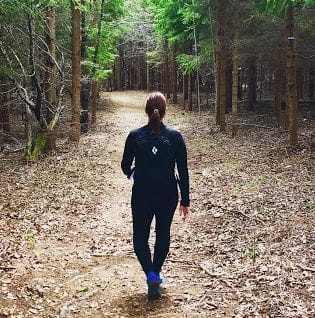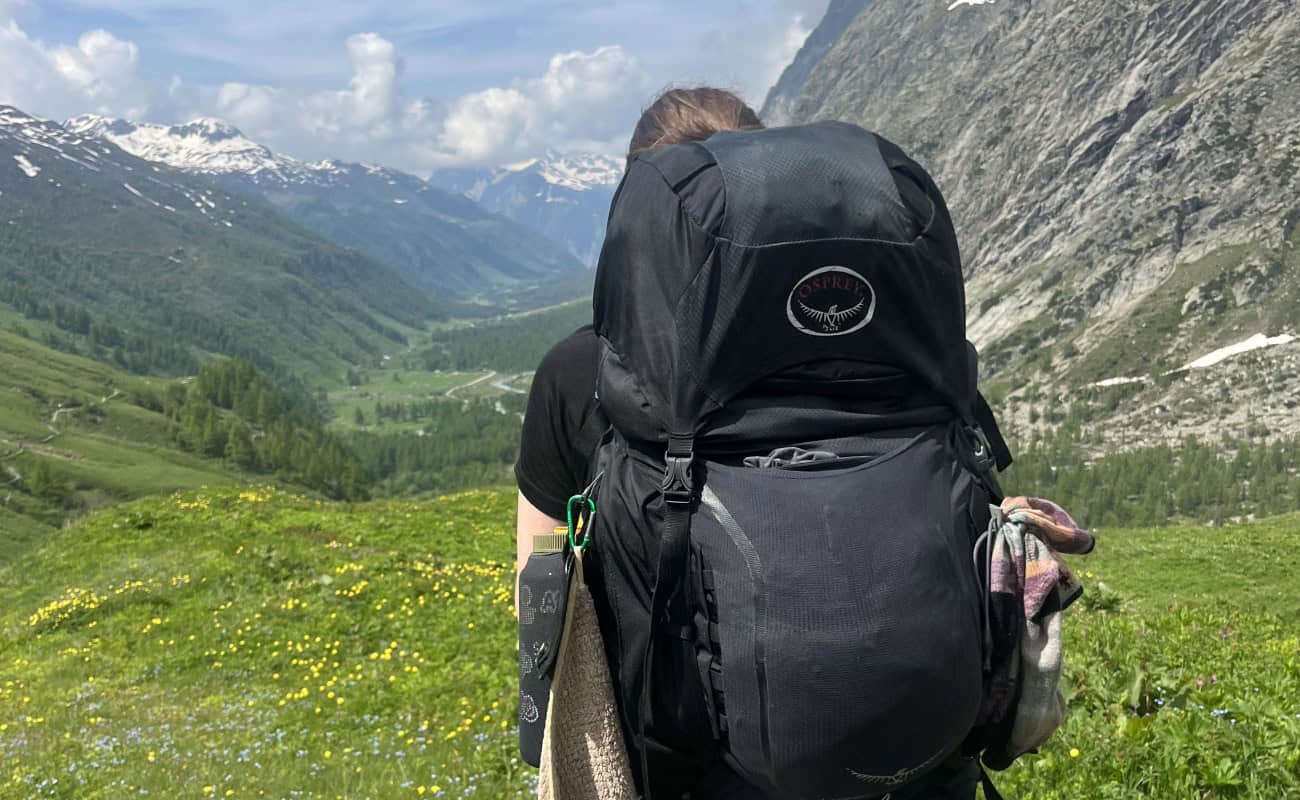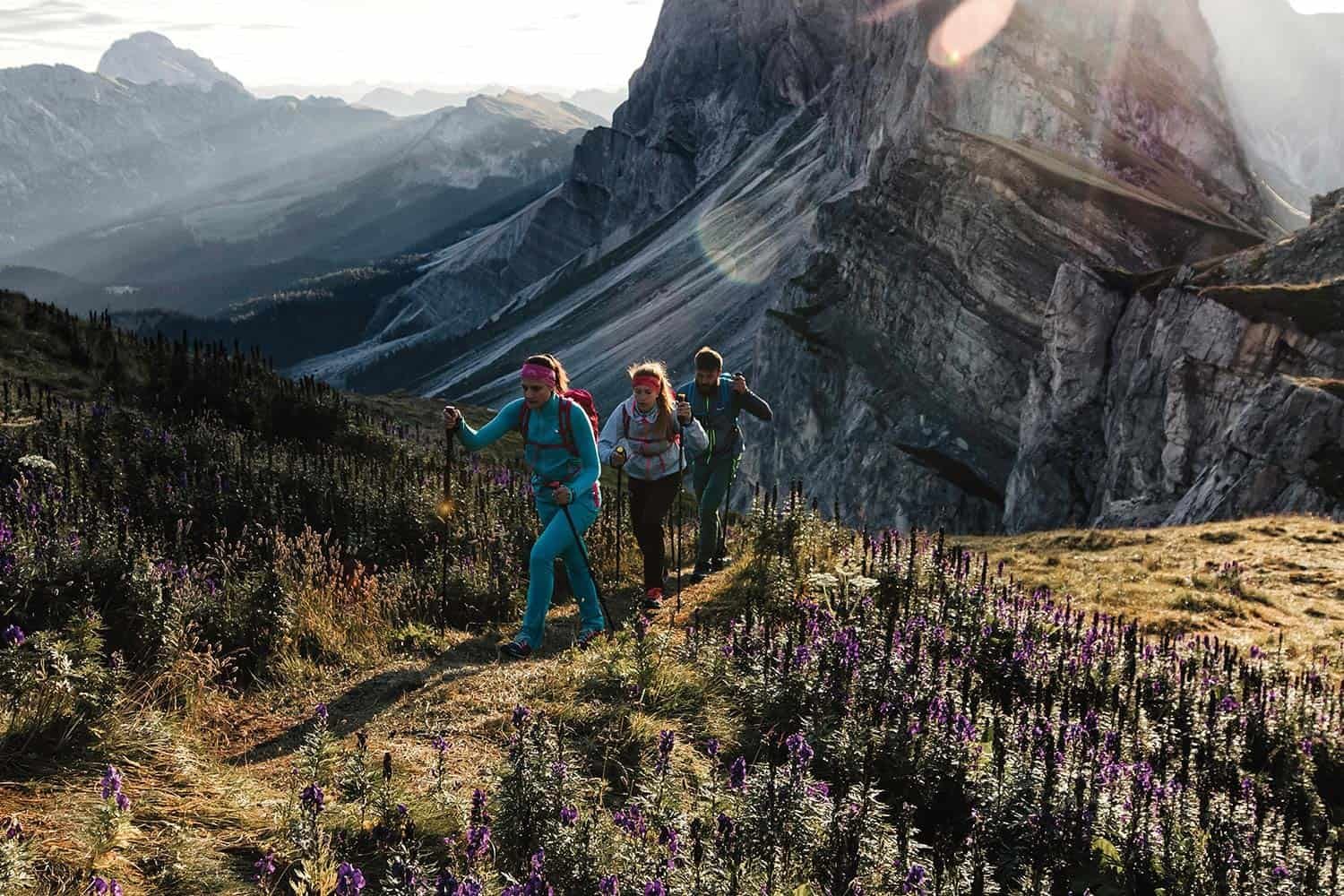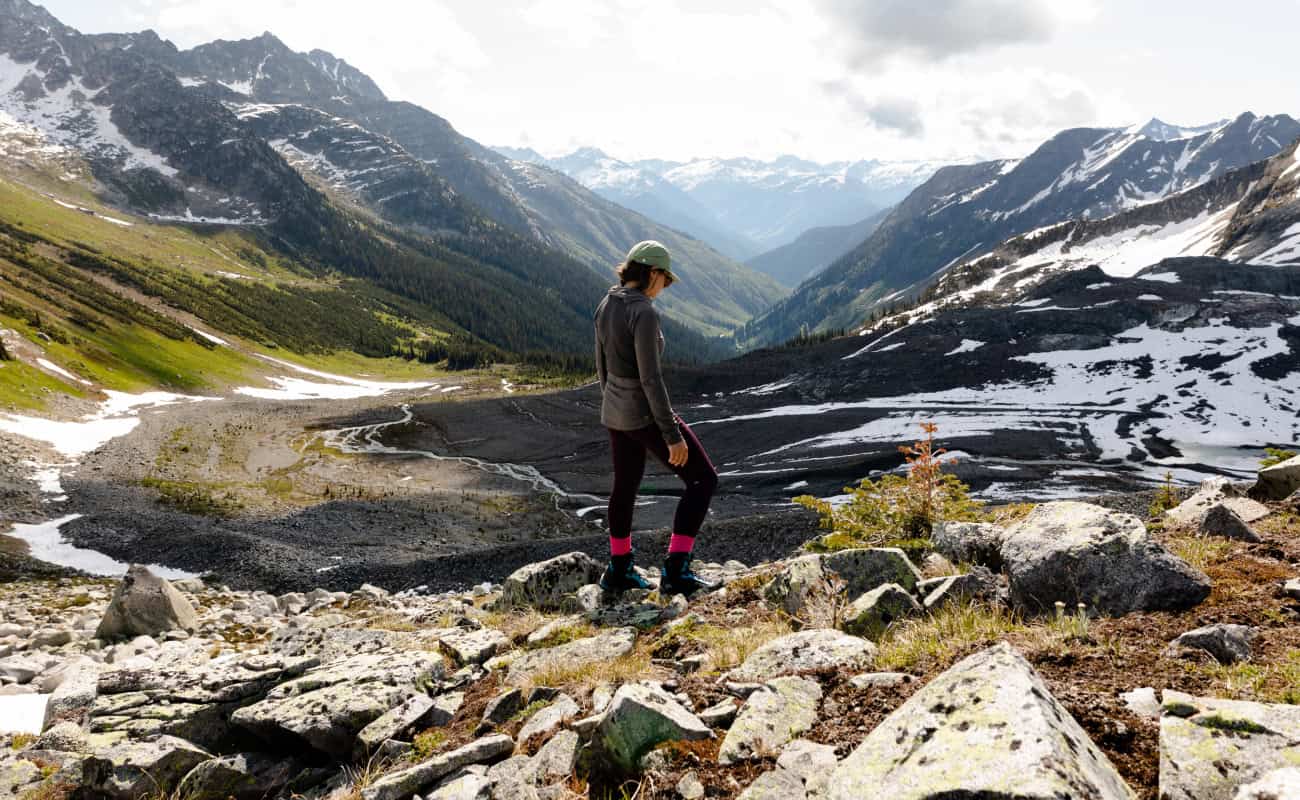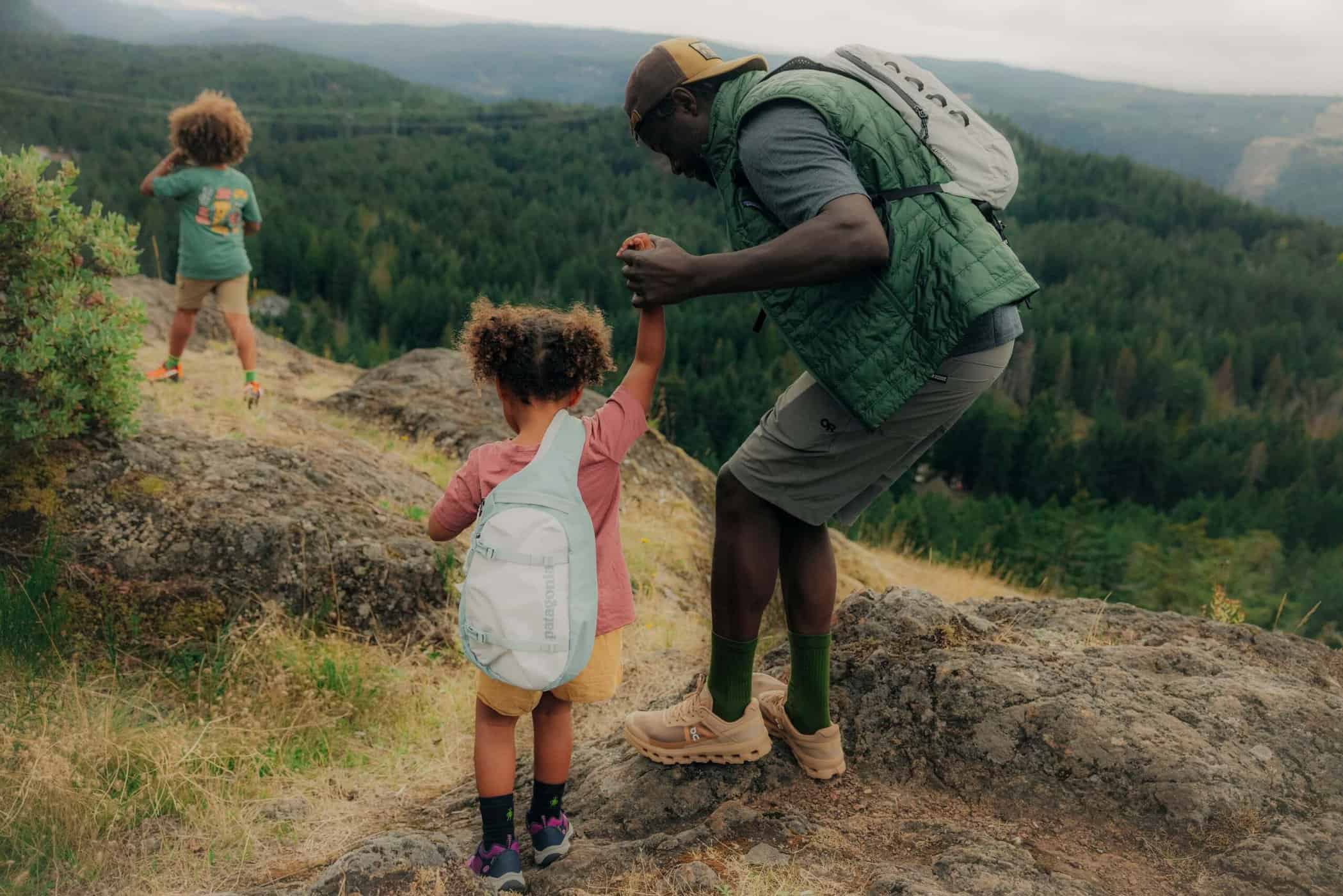“We’re all here because we’re not all there,” commented Sylvia Forest, one of the lead guides at the Alpine Club of Canada’s General Mountaineering Camp (GMC for short). I felt she aptly described the type of people who find amusement in walking over crevasses or swinging off granite spires. Usually, these people are known as mountaineers.
Mountaineering, the art of ascending a mountain, requires multiple skills – glacier travel, rock climbing, scrambling, and even ice climbing. I’ve dabbled in most of those disciplines, but seldom combined them. When Mountain Hardwear extended an invitation to this year’s week-long GMC I was eager to join.

Early the first day, I rushed breakfast and found myself in the back of a shuttle van bouncing up a logging road. Fellow campers chatted excitedly about what the terrain would be like, the objectives they’d tackle, and what gear they brought. Some, like me, were new to the GMC. For others, it’s a yearly tradition. We were on our way to a staging area where a helicopter would airlift us into the Battle Range deep in the Selkirk Mountains. Named for a famed encounter with a bear, it’s a remote granite range littered with pocket glaciers – a mountaineer’s dream.
The pitter-patter of rain on the van roof dampened the mood as we ascended. I looked out the window, wondering if our flight would be cancelled. Our group of 45 was the first of the season and we’d have to contend with variable weather. The van came to a stop and we piled out. The staff made haste sorting the bags then sorting us into flight groups.
Other than the staff who set up camp the week before, none of us had ever set foot in the Battle Range. Camp locations change every year, a tradition that dates back to GMC’s 1906 origins. Each year a committee selects a site that provides new challenges and opportunities for guests. They look for areas with mountaineering objectives, opportunities for glacier travel, and climbing. This year it took 18 equipment drops, a team of 9, and a week to set camp for the season. “They had about 10 minutes of nice weather,” I was told with a chuckle by a camp leader. Fortunately, the clouds above began to break as the whirl of helicopter blades drew closer. Group by group we were ferried up the valley.

Higher Grounds
As the helicopter rose above the tree line I saw the camp situated on a flat, grey moraine dappled with green shrubs. Tents were divided by a bright blue creek capped with a stone bridge. The mess tent, kitchen, showers, tea tent, and drying tent stood to the north side of the water, with brightly-coloured guest tents to the south.
After we landed I headed to the guest tents, bag in tow. As I walked by other campers, I was surprised to see almost every generation of the Mountain Hardwear Trango 4 tent. Some tents were new, while others appeared to be well over a decade old – still standing after years of use. The tents remain up the entire season as guests filter through camp.
During my brief stay at GMC, we experienced hail, snow, wind, and heat. In those extremes, quality makes all the difference. Mountain Hardwear is a perennial sponsor of the camp. Their donated gear makes the camp possible by equipping new and veteran mountaineers of every skill level.
After a hearty meal, the camp manager gave us a run-down of daily operations. Horns would sound in the morning to signal breakfast, after which guests could head out to complete their objectives. In the evening, new objectives would be posted in the communal tea tent.
The Climbing Committee determined objectives based on conditions, requests, and guide-to-guest ratios. Deciding I could use a refresher on snow safety, I put my name down for the snow school. After a game of cards, I retired to my tent with hopes of clear weather in the morning.
The Glacier
The next day our group trekked to the foot of the Wrong Glacier where Brett and Cam, two seasoned guides, gave us lessons on how to safely navigate ice fields. We started with the basics (glacial features, avoiding crevasses, front pointing in crampons) then moved on to using our ice axes, arresting falls and glissading. Brett was shadowed by an amateur leader named Ruari. Amateur in name only – Ruari had a wealth of experience guiding as a skier and climber. This year’s GMC was another step closer to him becoming a full-fledged member of the Association of Canadian Mountain Guides. The mentorship between guides is a part of the GMC culture, educating the next generation to carry the sport forward.
As we wrapped up the glissading portion of the lesson, which consisted of awkwardly throwing ourselves down the hill and using our ice axes to slow ourselves, dark clouds rolled over the ridge. We scampered back to camp to avoid the storm, but it didn’t stop our lesson.
Using the mess tent as a classroom, the guides gave us tutorial on crevasse rescue. They called on their expertise to answer a flurry of difficult questions from the guests. An hour later, the place was filled with ropes as rescue examples, and my mind was filled with answers. I left feeling slightly overwhelmed, but confident that alongside the guides and campers we could handle any terrain.
Every morning at the sound of the horn, groups would don their gear and hike out of the valley. Every evening we would regale one another with tales of our adventures. There were broken thumbs, wolverine sightings, elusive waterfalls, successful summits, and inclement weather. No matter the obstacles two things never seemed to change: days were long and the smiles were from ear to ear.

Danger on Goodrich
Four main routes became established over the week. To the northwest was a choice between Vistamount and Wrong Glacier. South of camp you would find Ledge Mountain and the Thumb Spire. My favourite climb was Mount Goodrich, accessed via the Wrong Glacier. To hike it, I needed crampons, gaiters, my ice axe, harness, and other bits of gear.
During our climb to Mount Goodrich, our group of four was roped together the entire day. More of a slog than the Ledge, the route took us over a col into a glacial basin. Being on the glacier meant frequent stops were impossible. The day was warm, but clouds overhead caused the temperatures to fluctuate.
The final push took us off the glacier and onto rock, which placed us in a tricky spot. Above us, a dangerous cornice loomed. Below us, a large crevasse. Suddenly our snow school escapades didn’t seem so trivial. We carefully worked past the obstacles, quickly summited the nearby Hanover Mountain, then set our sights on Mt. Goodrich.
Goodrich didn’t require any technical climbing, but it did have significant exposure on either side of the ridge. Our guide opted to have us short rope to the top, using rocks and boulders as protection while slowly climbed upwards. It was nerve-wracking at points, given the hundreds of meters between us and the lake below, but with our attention focused on each step and our partners ahead, we eventually made it to the summit.

GMC – A century of alpinism
That night in the mess tent we were handed pins to commemorate our achievements. In my week at Battle Range camp, I managed to summit seven peaks, earning a bronze medal. One member celebrated his 104th peak with the GMC, just a fragment of the many adventures he’s probably experienced.
At the wrap party, we listened to guides recount the history of the GMC. There was a real sense of camaraderie in the room between past and present members. 113 years since its establishment, the camp has changed significantly. Equipment is better, and access is wider-reaching, but the camp spirit remains. GMC exists to train and provide its patrons with opportunities to explore the Canadian backcountry and teach vital mountaineering survival skills. The more remote, scenic, strenuous, and painful the terrain, the better.
Share on



